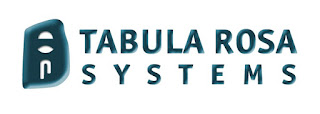+++++++++++++++++++++++++++++++++++++
February is Black History Month And Pantone Color Month(Coral in 2019)
Happy Chinese New Year - 2019 Is The Year Of The Pig
The New Year greeting in Chinese is “xin nian kuai le”
+++++++++++++++++++++++++++++++++++++
VPN (virtual private network) via whatis.com
|
| A virtual
private network (VPN) is programming that creates a safe and
encrypted connection over a less secure network, such as the internet. VPNs
were originally developed to provide branch office employees with safe access
to corporate applications and data. Today, VPNs are often used by remote
workers and business travelers who require access to sites that are
geographically restricted. The two most common types of VPNs are remote
access VPNs and site-to-site VPNs.
Remote access VPN
Remote access VPN clients connect to a VPN
gateway on the organization's network. The gateway requires the device to
authenticate its identity before granting access to internal network
resources such as file servers, printers and intranets.
Site-to-site VPN
In contrast, a site-to-site VPN uses a
gateway device to connect an entire network in one location to a network in
another location. End-node devices in the remote location do not need VPN
clients because the gateway handles the connection.
Most
site-to-site VPNs connecting over the internet use IPsec. It is also common
for them to use carrier MPLS clouds rather than the public internet as the
transport for site-to-site VPNs. Here, too, it is possible to have either
Layer 3 connectivity (MPLS IP VPN) or Layer 2 (virtual private LAN service)
running across the base transport. |
www.amazon.com/author/paulbabicki
====================================================

In addition to this blog, I maintain a radio show on BlogtalkRadio and an online newsletter via paper.li.I have established Netiquette discussion groups with Linkedin and Yahoo. I am also a member of the International Business Etiquette and Protocol Group and Minding Manners among others. I regularly consult for the Gerson Lehrman Group, a worldwide network of subject matter experts and I have been contributing to the blogs Everything Email and emailmonday . My work has appeared in numerous publications and I have presented to groups such as The Breakfast Club of NJ and PSG of Mercer County, NJ.
Additionally, I am the president of Tabula Rosa Systems,
a “best of breed” reseller of products for communications, email,
network management software, security products and professional
services. Also, I am the president of Netiquette IQ. We are currently developing an email IQ rating system, Netiquette IQ, which promotes the fundamentals outlined in my book.
 |
|




